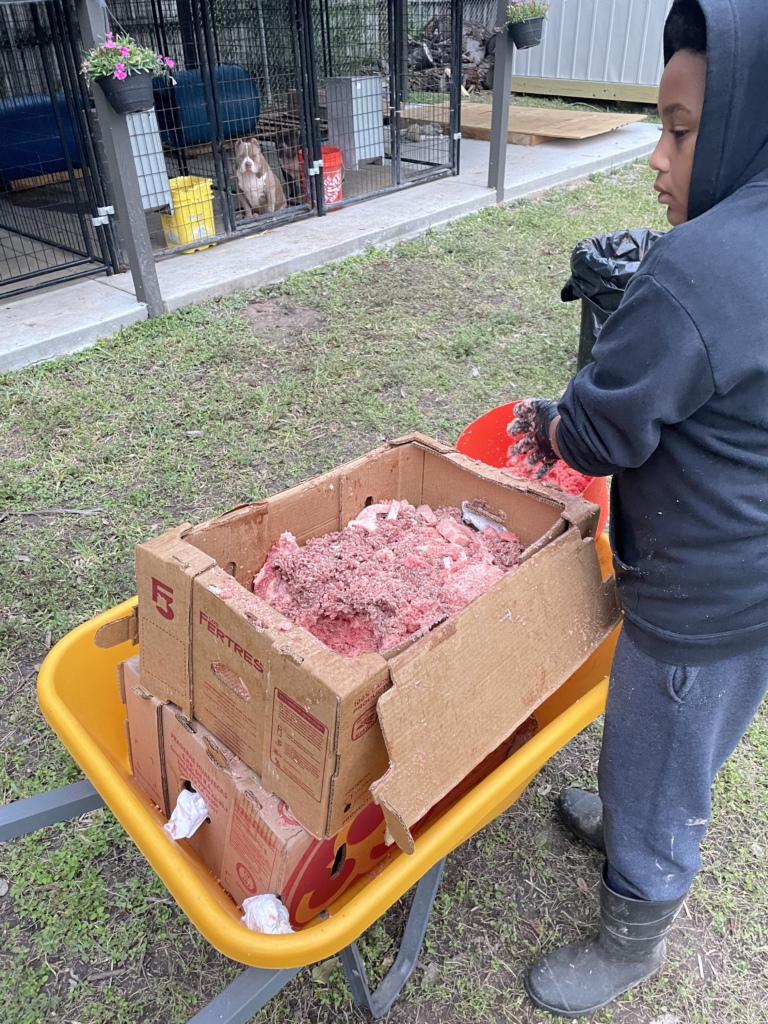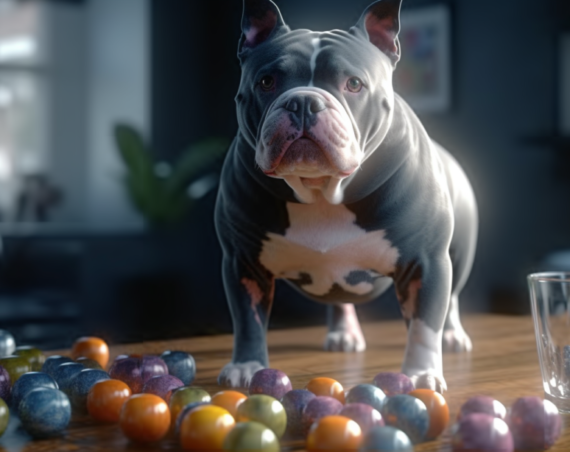Raw feeding puppies is controversial, and that is why we have decided to write this post, to explain to you everything about it. You will discover the benefits, the risks and how to do it, along with answers to the most frequently asked questions. The most complete and unbiased guide to feeding puppies raw.
You will also learn how to prepare homemade puppy food (or have it delivered to you), following the raw way so you can get started even if you are a total beginner. We also teach you how to transition weaning puppies to raw, from start to finish.
WHAT IS THE RAW DIET FOR PUPPIES?
Also known as Biologically Appropriate Raw Feeding (BARF), it consists of feeding your dog raw meat, edible bones, uncooked organs, milk, and eggs. Furthermore, it can also include certain vegetables and fruits.
It has gained plenty of popularity because more owners prefer to take an organic and natural approach to feed their pets. It has been a growing trend since many years ago, and this publication by the Wall Street Journal from 2007 covered the big dilemma of many dog owners due to concern about commercial foods, which might contain noxious additives and fillers.
In consequence, the raw diet makes even more sense for puppies, because they need the highest quality of nutrients and protein to develop properly. However, we are going to review the benefits and the risks associated with it.
BENEFITS OF RAW FEEDING YOUR PUPPY
Now it is time to check the advantages of raw feeding puppies because this approach has plenty to offer. Nonetheless, we will also mention some cases where it might not be the best option.
HEALTHIER SKIN AND SHINIER COAT
Protein is fundamental for your puppy because protein composes the 95% of its fur, and up to 40% of the protein it eats will go to its coat and skin. The combination of high-quality protein and fresh fat will protect the skin of your dog and make its coat shine.
CLEANER TEETH AND FRESHER BREATH
To improve the dental hygiene of your pet, the raw diet might be the best choice because it cuts out sugar from dry dog food – and therefore stops bacteria growth on the mouth – and because it integrates fresh and meaty bones, which are fabulous for cleaning the teeth of your puppy.
HEALTHIER GUT
It feeds the right microflora in the gut of your puppy, and hence, it prevents your pet from developing the leaky gut syndrome, which is especially dangerous because it allows toxic agents, partially-digested food, allergens, and strange objects to pass through the intestinal wall and get into the bloodstream. It generates multiple issues:
- Allergic reactions
- Autoimmune issues
- Joint pain
- Respiratory issues
- Abdominal pain
- Gas and bloating
Therefore, protecting the gut health of your puppy from the beginning will result in multiple benefits because it will keep the body of your pet working properly.
MORE ENERGY AND STAMINA
Since you are bringing your puppy protein and fat of higher quality, you will be feeding it with everything it needs to thrive because dogs get their nutrition from protein and fat for the most part. In this study, we can see that dogs preferred a diet high in protein and fat, leaving carbohydrates aside. During that time, the dogs presented excellent levels of energy and stamina.
A raw diet will make it easier for your dog to control its weight, and that is why a high-protein and low-fat diet is perfect for obese dogs. It is both the prevention and the solution for obesity in dogs. In consequence, dogs improve their body composition, leading to a sleeker and firmer body, which will be even more noticeable in breeds like a Rottweiler, Dogo Argentino or American Bully.
BETTER DIGESTION
Thanks to removing fillers and additives – which can be very heavy on the stomach of your dog – your pet will have a much easier time digesting its food. This benefit goes hand to hand with developing a healthier gut. No more bloating, gas or abdominal pain.
In fact, this surprising study from New Zealand, which followed the same conditions that the pet food industry uses during food trials, found out that dogs on a high-meat diet experience better digestion and they absorb more nutrients.
IMPROVED STOOLS
Another remarkable benefit of a raw diet is that the poop of your puppy will usually be in the shape of small and firm balls, which are easier to pick up and eliminate. You will prepare your puppy for a better and healthier life as an adult dog, and in addition, it will make your life much easier.

RISKS OF RAW FEEDING YOUR PUPPY
From reading the benefits you can see why many owners opt for feeding puppies raw. Nonetheless, you also need to know the possible risks that it might carry. We will share with you possible dangers and scenarios where it might not be the best choice.
CONTAMINATION AND BACTERIA
One of the major arguments against the raw diet is that it exposes your pet to a higher risk of contamination because bacteria are more abundant than on cooked and processed food. This fear was fuelled even more when the FDA found Salmonella in 7.6% of samples of raw food.
Nonetheless, we should remember that the Federal Regulatory Agency considers up to 10% of Salmonella occurrence in grocery poultry as background noise, and in simple words, an “acceptable rate”.
Yes, raw food may pose a higher risk than processed food, but even then, it falls below the acceptable rate of salmonella occurrence by the Federal Regulatory Agency. Furthermore, you can highly reduce the risk by reducing or eliminating poultry from the diet of your dog (especially if it is allergic to it).
Also, avoid mixing raw food with kibble because dry food needs a different PH to be digested, and in consequence, it will expose your puppy more to the bacteria present in raw meat.
UNBALANCED NUTRIENTS
Another major concern regarding raw feeding puppies. Nonetheless, this risk is more a result of poor planning than of the diet itself and not using it within the context of your dog (ex: inability to absorb certain nutrients or genetic issues).
According to experienced veterinarians – like in this video one of the benefits of a raw diet – the best way to combat a possible unbalance of nutrients is to include bones, organs, and tripe, in order to bring your puppy the nutrition it needs. Furthermore, play around with the kinds of meat you feed your puppy with. One day it can be beef, the next lamb, the next bison and salmon, and the list goes on.

HOW TO FEED MY PUPPY RAW FOODS?
If you are convinced to try this diet, then here you have our top tips on how to do it successfully. These tips will help you to transition your pet easily and to unleash all the benefits.
KEEP IT STRICTLY RAW
Because cooked food and raw food are digested differently – because of the PH levels in the stomach – you need to transition your puppy straight to raw. Cold turkey, as some might say.
FRESH IS ALWAYS BETTER
Because your puppy is more vulnerable, the meat it eats must be as fresh as possible. Nonetheless, if you have to store it, then make sure to refrigerate it below 4 C°. Some commercial raw foods for dogs are good alternatives for pet parents living a busy lifestyle.
PICK ONE SOURCE OF PROTEIN
Stick with a single source of protein for 7-10 days to see if your dog reacts well to it or not. If after the period your puppy is thriving on it, then add a second source of protein and keep doing the process, because variety is a huge factor in the raw food diet to keep novelty and nutrition at optimal levels.
TAKE IT EASY WITH ORGANS (AT FIRST)
To keep it safe and easy at the beginning, you should limit organs to only 10% of the diet of your puppy. Monitor how your dog reacts and increase the addition of organs progressively.
TAKE CARE OF PHOSPHOROUS AND CALCIUM
The best way to add proper levels of calcium and phosphorus to the diet of your puppy is to include meaty bones like chicken necks, turkey necks, venison bones, veal ribs, and beef neck bones.
THREE TIMES A DAY KEEPS A PUPPY HAPPY
To keep your puppy happy and ensure its optimal development, make sure to feed it three small meals a day. You should follow this protocol until it is six month old, and then, you can proceed to switch to two or one meal a day.
CONTROL FAT
Even though your dog needs fat, you should not overdo it because it can cause problems like deficiencies of nutrients. You should keep the levels of fact below 25%.
BALANCE IT WITH EXERCISE
A raw food diet is not a panacea, and therefore, you still need to exercise your dog regularly, especially if it is an active breed like a Barbet. Daily walks, playtime, and training will do the trick.
RAW FEEDING PUPPIES – FAQS
Now it is time to answer the most frequently asked questions about raw feeding puppies, to clear all of your doubts and get you started the right way.How much raw should I feed my puppy?
Your puppy must eat 5-6% of its preferred body weight. For instance, a 10kg Great Dane puppy will have to eat approximately 500-600 grams of raw food per day. You should split it between three meals a day, to ensure its optimal development. Once your puppy becomes 1-year old, then you must transition to the recommended intake for an adult dog: 2-3% of its ideal body weight.Do dogs on raw diet live longer?
A raw diet prolongs the longevity of your dog because it provides better nutrition and allows the body of your puppy to develop properly, and once it becomes an adult dog, it favors a correct functioning. As it improves several markers such as gut health, teeth health, and digestion, it improves the quality of life and increases the lifespan of your pet.Does a raw diet plan needed to ensure my puppy’s health?
You must plan its diet properly to ensure your puppy’s health, in order to provide all the nutrients it needs and to avoid deficiencies. Make sure to feed it 5-6% of its ideal body weight until it reaches the 1-year old mark. Furthermore, include meaty bones to guarantee adequate levels of calcium and phosphorus. Finally, make fresh meat the foundation of the diet plan for your puppy and keep organs at a minimum, roughly 10-15%.What if my dog is allergic to raw meat?
If your dog is presenting allergic reactions to raw meat, it is due to imbalances. The best way to fix it is with supplementation. You should add fish oil, probiotics, and tripe to the raw meals of your dog and observe how it reacts. Furthermore, you should avoid problematic protein sources like chicken, and prefer ruminants like beef, sheep, and lamb.
As you can see, raw feeding puppies is very controversial, but also very interesting. We hope that our article cleared your doubts and allowed you to see, in an unbiased manner, the pros and cons of this diet for your puppy.
Article by Breeding Business




